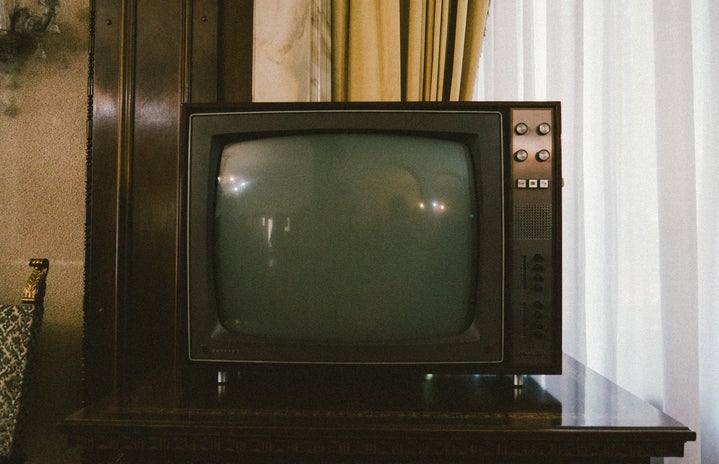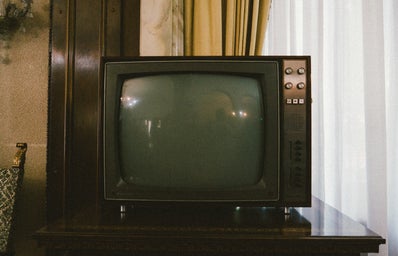As women started entering the workforce, television starts to reflect the hardships that women had to face with the patriarchal workplace culture, most noticeably in The Mary Tyler Moore Show. Instead of focusing on family unity, television women lead splintered and troubled lives but realistic and relevant to many female viewers back home. However, this does not mean that the misogynistic implications in domestic sitcoms in the fifties and sixties did not partially translate over to sitcoms in the seventies. What complicates Taylor’s argument is that many female-led shows have made great strides in propelling women forward on the small screen, but the opening credits do not reflect the same message. Television title sequences, which usually appear in the beginning of every episode, are essentially the face of the show where they create genre expectations for viewers. Therefore, it is problematic when opening credits do not align with the episode’s or the series’ message because no matter how progressive the series is, the opening credit is the first impression and guide for the rest of the show. Given how much agency opening credits hold, the title sequences may do the opposite and reverse the episode’s ideological progression. This essay will mainly focus on four female-led sitcoms in the seventies: The Mary Tyler Moore Show, Rhoda, The Carol Burnett Show, and Maude. Although this will be a highly comparative essay, it is ultimately pointing to how mechanisms of television contribute to its attempt in contributing to the cultural changes for women in the US, for better or worse. I will argue that these four opening credits, albeit progressive in some areas, are still mitigating the tension between men and women, where women have to carry the majority of emotional labor and follow misogynistic stereotypes.
The Mary Tyler Moore Show has revolutionized female portrayal on television and has been a trailblazer for women involvement in the television industry. The show breaks traditional standards by portraying Mary as a single, sexually active, working woman, where supporting characters can share a spotlight too. Half of the scripts that were accepted for the show were written by women, and eight women won the Emmy Awards for the show; both of which are incredible accomplishments for women in television. However, its opening credit echoes Bathrick’s argument where even though a lot of the comedy in the show came from challenging gender roles and division labor, “the narrative closure…involves the return to a ‘working order’ that affirms traditional family hierarchy”.
Every episode opens with the theme song and opening credit, and the first line sings “Who can turn the world on with her smile?” with Mary driving and smiling. Even though Mary driving signifies independence and mobility because men typically drive, the lyric is awfully repulsive. The emphasis on her smile perpetuates the idea that women are somehow better when they smile — when they are positive and happy. The fact that a smile turns the world on is quite sexually charged in a disturbing way because this line implies that in order for women to be accepted and loved in society, they have to be able to elicit a sexual response from other people, presumably men — again, fulfilling male needs. Mary arrives at her big Victorian house, and while it shows that a single woman can still occupy that kind of space, the “suburban tract-home became the model for a more efficient nuclear family” in the 1950s, and Mary has to ensure that “yesterday’s family becomes today’s familial,” which is again delegating the emotional labor to women (Bathrick 162). The opening credit then moves to the workplace, where Mary is obviously the only woman in the office, and she is almost the one who is mediating between the men by laughing fervorously. Obviously this show and Mary Tyler Moore are empowering female viewers by showing a strong, single working woman and her healthy female friendship with best friend Rhoda, the intro is still painting Mary as naive, ending with her tossing her beret into the air like it is graduation — underlining the innocent excitement that graduates feel for their unknown future.
The success of The Mary Tyler Moore Show spawned the spin-off Rhoda, Mary’s best friend and the perfect foil to Mary. The opening credit begins with intercutting scenes of Rhoda trying on different head scarves and hats with vibrant colors and bohemian patterns that reflect her free spirit. A few shots of her interacting with her friends, it embraces supporting characters and gives space to them. However, the sequence takes a quick turn when it introduces the man in her life, Joe, by having him stroke her head, a gesture of care but almost treats her like a child. The next cut is when Rhoda attempts a trust fall on Joe, but he completely ignored her actions, leaving her fall into the couch alone. Here, the relationship between Rhoda and Joe may look loving and funny, but there are layers of patriarchal implications embedded in these two very simple clips. The fact that he does not catch her when she attempts a trust fall demonstrates the lack of trust between them, and it is also too naive for Rhoda to trust Joe. She then goes on to comedically hit Joe in the head with plushie-like sticks — this act of disciplining, albeit adorable at first, is almost pointing to women’s need to discipline their men as if they are children but the motherly action shows women as the parent-at-home, the annoying wife who is controlling. Rhoda’s sequence finishes with a montage of her answering the doorbell, and the end of that montage is just a man’s arm holding out a hat in a hotel porter uniform, an odd gesture to begin with, but what follows is Rhoda laughing. Due to how fast these clips intercut with each other, it could possibly make viewers think that an offer from a man can elicit such happiness from her, another display of female submissiveness.
The Carol Burnett Show’s opening credit differs from the previous two because it is in animation — a cartoon version of presumably Carol enters the frame in a maid outfit with a mop and sees CBS on the screen, an American television broadcasting corporation. She takes her broom and restructures CBS into Carol Burnett Show, with the same initials. When she is doing so, she would move her hips and perk up her buttocks, all very female-oriented gestures. After she completes “The Carol Burnett Show” on screen, she covers her face with her hands and proceeds to covering her head with the bucket she had — odd display of shyness given it is her show with her own name. The animated opening credit emphasizes Bell’s use of the word “comical” when it comes to elderly portrayal on television. The fact that she is dressed in a maid attire coupled with her modesty and bashfulness reinforces the need for women to be submissive. It is almost too good for a woman to have her own show, and she has to slouch and show humility as a way of apology even though she rightfully deserves her own program. On the other hand, the opening credit boldly plays on its network’s acronym because it aligns with the show’s initials. For a woman to toy with the network’s name and transition into her own name is a monumental act because, to an extent, she is willing to defy the corporation and make its name fit her name. However, another view would be that she is fitting her own name to the corporation’s, and perhaps the network has some deciding power in that creation too.
Another show that showcased older women was Maude, a spin-off of All in the Family, which both series made marks in television history by constantly challenging the norm and tackling social and political issues that other shows are scared of confronting. Like Rhoda, Maude’s opening credit opens with a wide aerial shot of New York City. Welcoming the viewers into her home, she acts as the liaison between the show and the audience, which makes sense considering it is her own show, but it is also a tradition to have the woman perform the emotional labor of welcoming strangers into the house. Many shots of Maude just pacing in the house and walking around, never showing her outside of the house. This physical containment of Maude in her house does not really align with the show’s liberal sentiments. The sequence then moves to quick snapshots of Maude’s facial expressions — all of them are just variations of a grumpy, loud woman. The title sequence ends with Maude leaving the kitchen and exiting off screen, but after everything, she is still contained in the house, contrasting with her liberal, open-minded views.The last line of the theme song fully shows support for Maude as it sings “‘That uncompromisin’, enterprisin’, anything but tranquilizin’, Right on Maude!’” For an older, single mother who has been divorced three times, Maude is trailblazing for a lot of women as she embodies family dysfunction.
Taylor points out that all the women in these shows share one commonality — learning how to live without men. One issue that all four opening credits has in common is finding a balance between representing strong, complex women but also not detering male or even female audiences that are not familiar with this shift in female portrayal. Regardless, all four shows made historic strides for women on television and even women in the television industry. While the opening credits contain women both ideologically and physically at times, they all have scenes of genuine female friendship, which underscores the idea of women supporting women, but more importantly emphasizes the notion that women gain emotional nourishment from each other while learning how to live: without men, with women.


